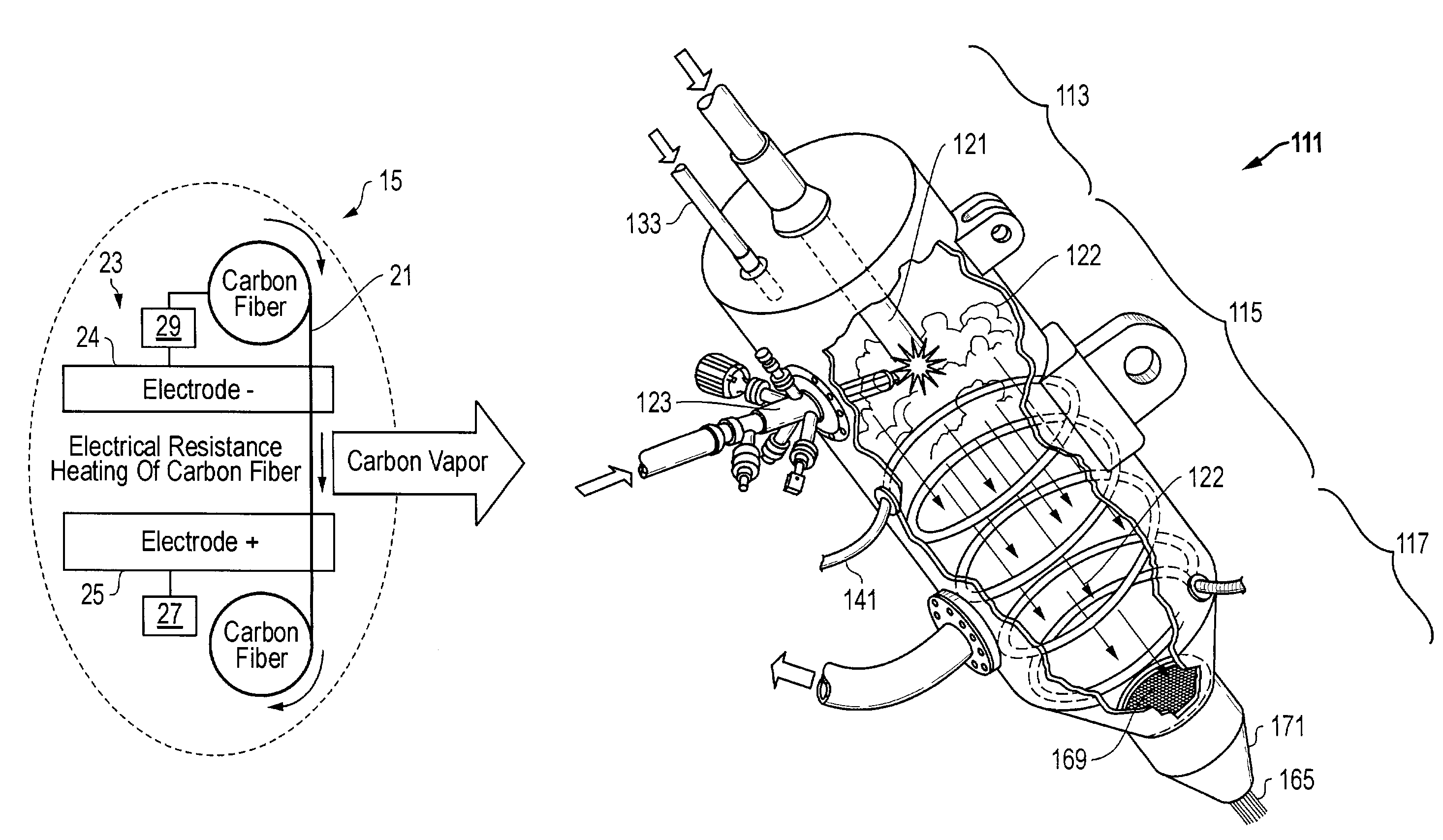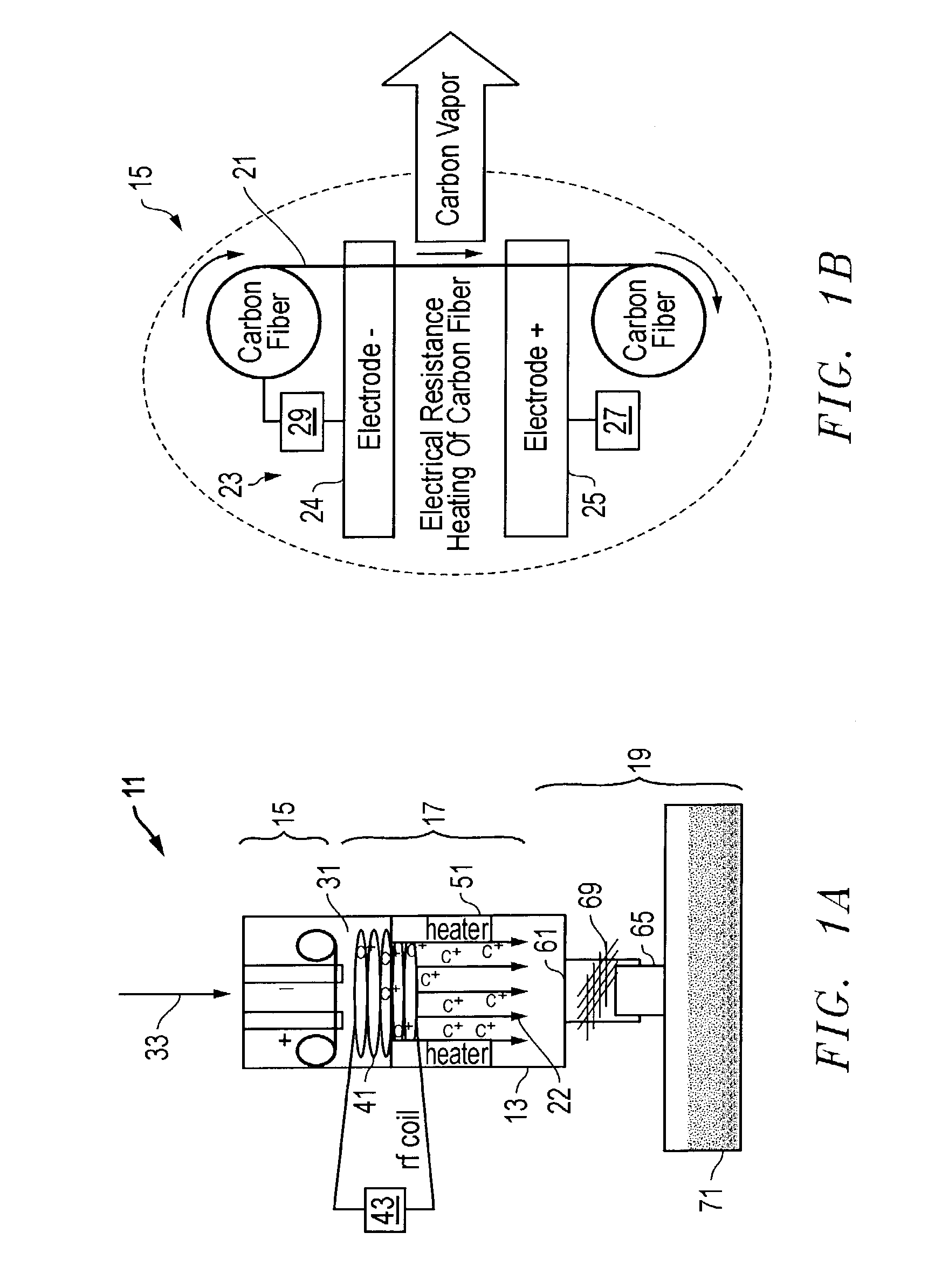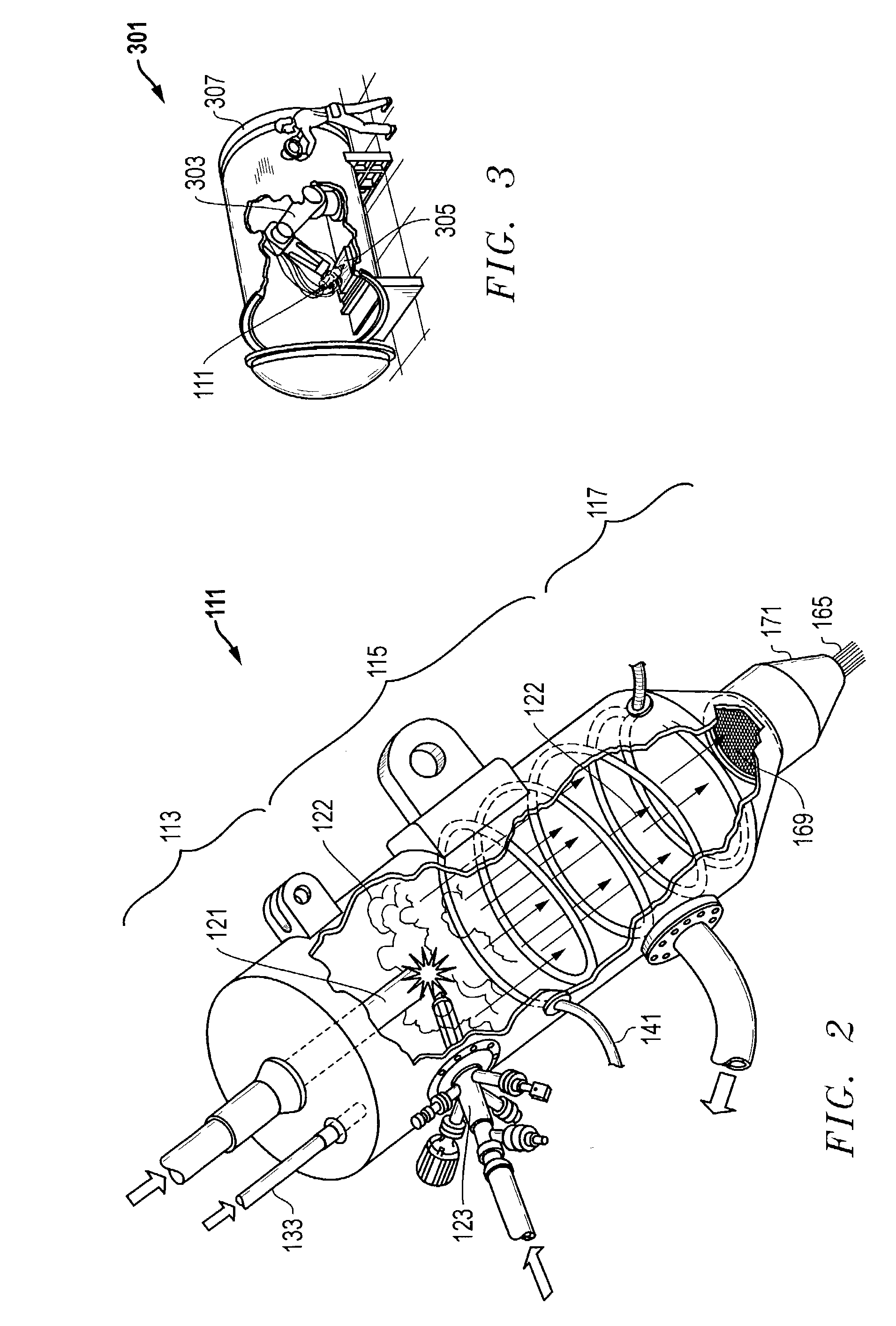System, method, and apparatus for continuous synthesis of single-walled carbon nanotubes
a single-walled carbon nanotube and synthesis technology, applied in chemical/physical/physical-chemical processes, chemical/physical/physical-chemical processes, coatings, etc., can solve the problems of achieve rapid resistance-heating of feedstock, localized directional control of energy, and high-performance structures
- Summary
- Abstract
- Description
- Claims
- Application Information
AI Technical Summary
Benefits of technology
Problems solved by technology
Method used
Image
Examples
Embodiment Construction
[0025]Referring to FIGS. 1-8, a system, method, and apparatus for producing single-walled carbon nanotubes (swcnt) in a continuous manner is shown. As will be described in greater detail below, some of the embodiments of the present invention use a three-step process of carbon plasma generation, plasma stabilization, and product deposition, all of which are scalable to large, industrial volume production levels. For example, FIGS. 1a and 1b depict one embodiment of an apparatus 11 for producing single-walled carbon nanotubes. Apparatus 11 comprises a continuous operation, flow-through reactor 13 having an initial region 15 (FIG. 1b), a plasma stabilization region 17, and a product formation region 19. The product formation region 19 is located immediately downstream from the plasma stabilization region 17. A feedstock 21 is located in the initial region 15 and is designed and adapted to be continuously supplied to the reactor 13. The feedstock 21 may comprise many different types an...
PUM
| Property | Measurement | Unit |
|---|---|---|
| Temperature | aaaaa | aaaaa |
| Temperature | aaaaa | aaaaa |
| Temperature | aaaaa | aaaaa |
Abstract
Description
Claims
Application Information
 Login to View More
Login to View More - R&D
- Intellectual Property
- Life Sciences
- Materials
- Tech Scout
- Unparalleled Data Quality
- Higher Quality Content
- 60% Fewer Hallucinations
Browse by: Latest US Patents, China's latest patents, Technical Efficacy Thesaurus, Application Domain, Technology Topic, Popular Technical Reports.
© 2025 PatSnap. All rights reserved.Legal|Privacy policy|Modern Slavery Act Transparency Statement|Sitemap|About US| Contact US: help@patsnap.com



